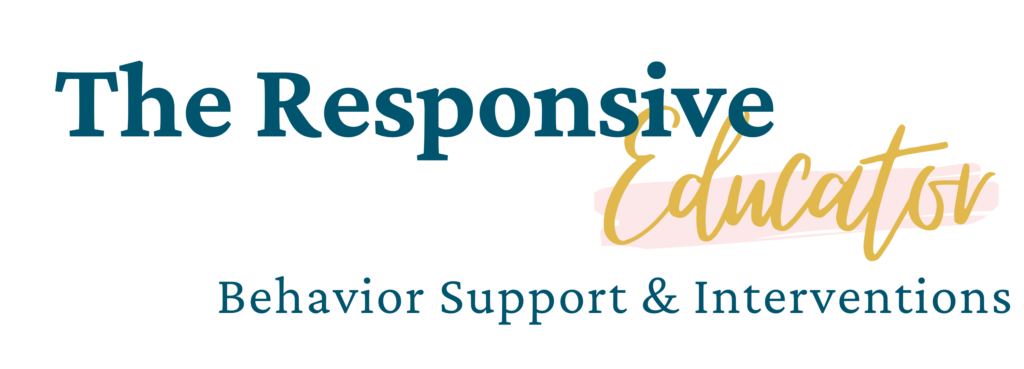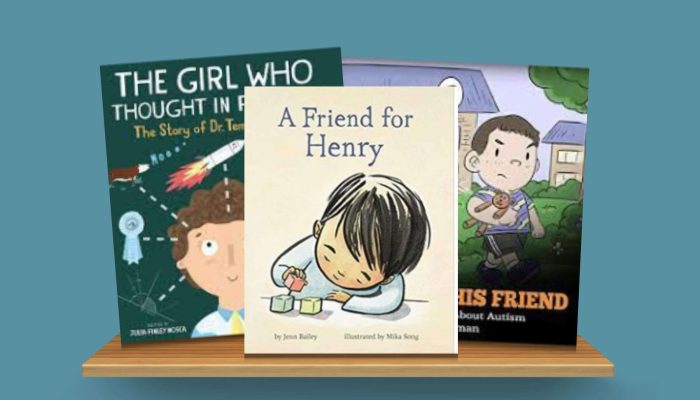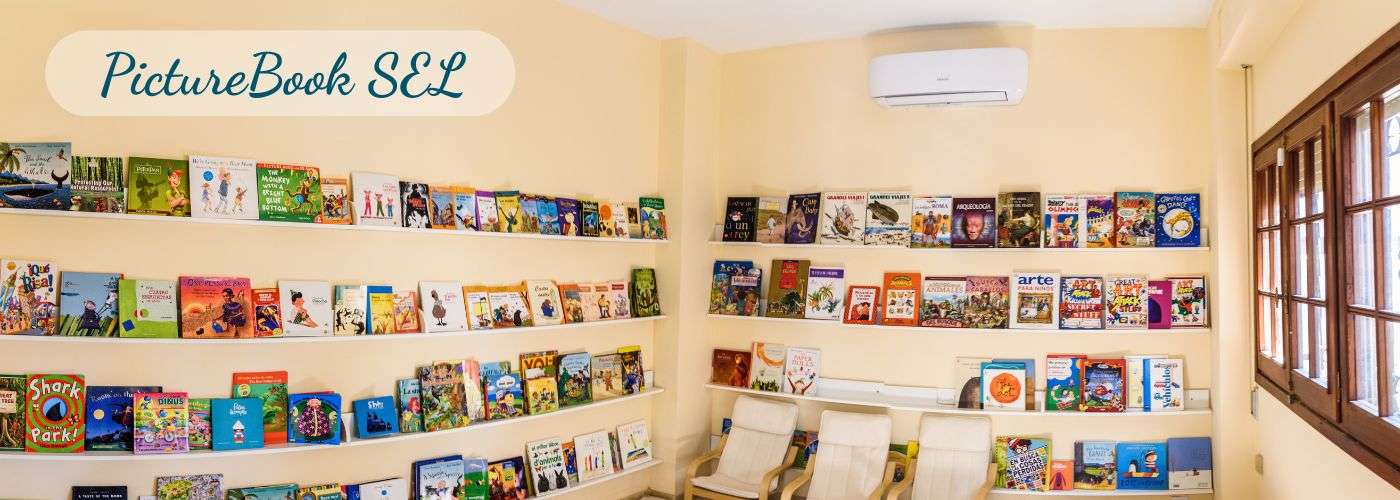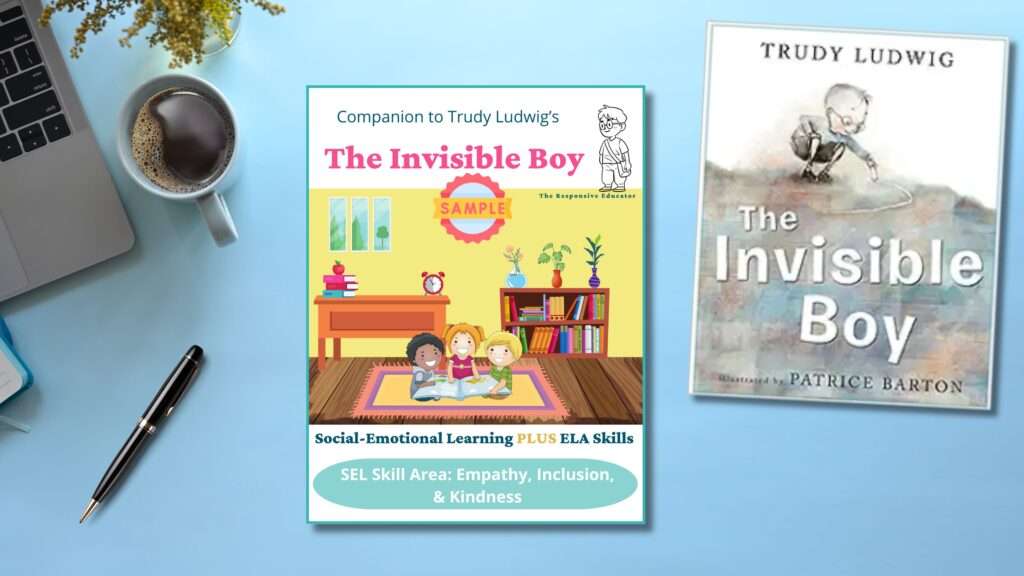


Introducing children to autism through books can foster empathy and understanding. Some stories, like Uniquely Wired and The Girl Who Thought in Pictures, share the perspective of individuals with autism, giving readers insight into their unique experiences and strengths. These stories help kids see the world through their eyes/
Other books, such as Since We’re Friends and Benji, The Bad Day, and Me, take a different approach by showing how friends and siblings can support and better understand a loved one with autism. These varied perspectives help children grasp both the personal and relational aspects of autism, making these books ideal for promoting inclusivity and kindness.
For some of the books on this site, I’ve created interactive read-alouds designed to enrich their use in the classroom. These resources include discussion questions, activities, and prompts that actively engage students and deepen their understanding of key themes. More interactive read-alouds are on the way! If there’s a specific book you’d like to see included, please reach out using the contact form at the bottom of the page.
For more insights on supporting social-emotional learning (SEL) and incorporating interactive read-alouds into your teaching, explore these posts:
(As an Amazon affiliate, I earn a small commission if you purchase products through the links on my posts. Thank you for your support!)
Summary: A Day With No Words is a heartwarming and insightful story that follows a day in the life of a nonverbal boy and his mother as they navigate the world using an Augmentative and Alternative Communication (AAC) device. Written by Tiffany Hammond, a neurodivergent advocate, this picture book shares a glimpse into the unique bond between an autistic mother and her autistic son, showing how communication transcends spoken words. The story beautifully illustrates how the boy expresses himself through his device, demonstrating that just because he doesn’t speak in the conventional way, doesn’t mean he doesn’t have a voice. Each page highlights small, relatable moments that are common for families who use alternative communication methods.
Description: In A Day With No Words, Hammond focuses on fostering a deeper understanding of how communication can take many forms. The book is written simply, making it easy for young readers to follow along, and emphasizes how vital it is to embrace different methods of communication, particularly for those on the autism spectrum. Through vibrant and expressive illustrations, the book walks us through how the boy’s tablet helps him express his thoughts, needs, and feelings, showing the world that nonverbal communication can be just as meaningful and impactful. The illustrations, rich with color and emotion, add depth to the storytelling, allowing readers to experience the day’s emotions alongside the characters.
Hammond’s book is more than just a story; it is an advocacy tool for neurodiversity, encouraging inclusivity and empathy. By the end of the book, readers are reminded that communication is not one-size-fits-all and that understanding can be achieved in many ways beyond spoken words.
Reviews and Reflections: Parents, educators, and advocates for neurodiversity have praised A Day With No Words for its representation of alternative communication. Many reviewers, like Jessica Bondurant, highlight how the story resonates with both children and adults, especially those in the neurodivergent community. Readers love how the book doesn’t just tell a story but also opens up conversations about how people communicate in different ways. One reviewer on Amazon shared how her daughter and she enjoyed taking turns reading the pages, making the book a shared experience of understanding.
Another review emphasized how the book provides much-needed representation for nonverbal children, which is rare in children’s literature. The vibrant illustrations are frequently mentioned as a standout, engaging young readers while portraying the emotional depth of the characters. Tiffany Hammond’s personal connection to the story—being a mother of an autistic son—adds authenticity, which many parents found comforting and reassuring.
On the flip side, some readers noted that the book contains a reference to the word “handicapped,” which may feel jarring to some. However, it is made clear in the text that this term is incorrect, offering an opportunity for a meaningful discussion.

Summary: In Classroom Six, Henry is on a mission to find a friend. He’s looking for someone who shares his love for things being just right—someone who listens and appreciates order, just like he does. However, throughout the day, nothing seems to go as planned, and Henry starts to wonder if he will ever find someone who understands him. As the noise and unpredictability of the classroom grow overwhelming, Henry discovers that sometimes friendships happen when and where we least expect them. This sensitive and warm story invites readers to see the world through Henry’s eyes and celebrates the beauty of finding connections in unexpected places.
Description: This picture book provides a gentle window into the world of a child on the autism spectrum. Through Henry’s experiences, readers get a glimpse of the challenges and triumphs that can come with social interactions for children who experience the world differently. The story is told with empathy and care, with Mika Song’s illustrations further capturing the emotions and nuances of Henry’s journey. The simple but poignant narrative makes it accessible for young readers, offering an opportunity to foster conversations about acceptance, friendship, and the power of understanding differences.
Reviews and Reflections: Many parents and educators commend the book for its heartfelt depiction of Henry’s perspective, noting that it’s a valuable tool for helping children understand neurodivergent peers. One reader shared how their autistic child connected with Henry’s experiences, expressing that the book made their child feel seen. Another parent appreciated how the book portrays the emotions of finding and forming friendships without requiring Henry to change who he is.
Other reviews highlighted the book’s calm, steady pace, making it a comforting read for children who may find the social world around them a bit overwhelming. Some reviewers did mention that the story’s slower rhythm might not engage every child, especially those who prefer fast-paced books. However, the majority found it to be a touching and necessary addition to a classroom or home library.
A few readers wished that Henry’s autism was more clearly referenced in the text, noting that it wasn’t obvious until reading the book’s description or reviews. Regardless, many praised the way A Friend for Henry opens up important conversations about friendship, acceptance, and empathy. The illustrations were also noted for their ability to effectively convey emotions, helping children understand Henry’s feelings even if they’ve never experienced them themselves.

Summary: When Simon, a boy with autism, joins a mainstream school, his classmates are unsure how to interact with him. As they navigate new experiences and emotions, the story shows how understanding Simon’s differences leads to friendship and appreciation of his strengths. The narrative highlights the importance of patience and inclusivity when building relationships, making it a powerful tool for fostering empathy in young readers.
Description: This book offers a gentle introduction to autism without explicitly labeling it. Simon’s differences are subtly woven into the story, allowing readers to experience his world alongside the other characters. The book effectively illustrates how confusing and sometimes overwhelming social interactions can be for children with autism. Through Simon’s journey, the story emphasizes the positive contributions that neurodivergent individuals can make when given the chance to be themselves.
Reviews and Reflections: Readers often highlight how well this book introduces the concept of autism without overwhelming younger audiences. One reviewer mentioned using it in their son’s classroom to help his peers understand autism and appreciate his differences, noting that it fostered a more inclusive environment. Another reviewer appreciated how the book portrayed both the initial challenges and eventual acceptance that comes with understanding autism, calling it a wonderful tool for opening conversations about inclusion.
However, some reviewers noted mixed feelings about a character referred to as “Horrible Hettie,” as they felt it detracted from the inclusive message by seemingly excluding another child. Despite this, many found that this element could spark valuable classroom discussions on how to approach differences beyond autism. Overall, this book is praised for its role in promoting acceptance and understanding.

Summary: Zane is a zebra with autism who feels different from his peers. He’s convinced that others only notice his “autism stripe.” Throughout the story, Zane’s mother helps him recognize that he has many stripes, each representing a different part of his identity. From his kindness to his creativity, Zane learns that his autism is just one part of who he is and that he has much to offer beyond it.
Description: This book is a heartwarming and empowering story for children on the autism spectrum, emphasizing self-acceptance. It reassures kids that they are more than their diagnosis and that their differences are strengths, not limitations. The vibrant illustrations and gentle narrative make the story accessible for young readers, offering a powerful message about embracing all parts of oneself.
Reviews and Reflections: Many readers found All My Stripes to be an effective tool for discussing autism with children, praising its focus on self-acceptance. One reviewer shared how their child resonated with Zane’s struggles, making it easier for them to talk about their own experiences with autism. Others appreciated the book’s emphasis on highlighting a child’s unique strengths rather than focusing solely on their diagnosis.
However, a few readers mentioned that the book might oversimplify autism, noting that it presents a more general understanding of the condition. Despite this, the overall reception was positive, with many readers recommending it as an introduction to autism for young children.

Summary: Benji, the Bad Day, and Me by Sally J. Pla tells the touching story of two brothers, one of whom is on the autism spectrum. The book follows Sammy, the neurotypical sibling, as he struggles through a rough day filled with frustration and disappointment. It often seems to Sammy that his bad days go unnoticed, especially when compared to his younger brother Benji’s.
However, by the end of the story, it’s Benji who provides unexpected comfort to Sammy. Through gentle storytelling and heartfelt illustrations, this book highlights the importance of empathy, love, and understanding within a family, especially when one sibling has different needs.
Description: This picture book is a beautiful exploration of sibling relationships, neurodiversity, and the emotional complexities that can arise when one child has autism. Benji, the Bad Day, and Me addresses both the frustrations and joys of being a sibling to a child with autism while emphasizing that all children have bad days and need support.
Sally J. Pla’s sensitive writing, coupled with Ken Min’s evocative illustrations, brings to life the delicate bond between the brothers. Benji’s quiet presence and Sammy’s realization that he is seen and understood by his brother will resonate with readers of all ages. This story is particularly powerful for families with neurodivergent children, offering a meaningful reflection on the shared emotions that connect us, no matter our differences.
Reviews and Reflections: Readers overwhelmingly praise Benji, the Bad Day, and Me for its heartfelt portrayal of sibling love and its nuanced depiction of neurodiversity. Many reviews highlight how the book captures the real emotions of living with a sibling who has autism, including the disparity in attention and expectations, without assigning blame. The book is described as “a beautiful representation of what autism looks like in real families” and celebrated for the way it “addresses the feelings of siblings” in a way that is relatable for young readers.
The book is praised for its ability to spark important conversations about fairness, patience, and understanding, both in classrooms and at home. Teachers found it valuable for classroom discussions about Autism Acceptance, while parents appreciated the story’s gentle handling of sensory overload and sibling empathy. One reader noted how it “touched my whole family,” particularly emphasizing how it addresses the challenges of dealing with sensory overload while balancing the needs of a neurotypical sibling.
In terms of considerations, some reviewers emphasized the importance of adult guidance when reading the book. The story doesn’t overtly identify Benji as being on the autism spectrum, which may require further explanation for younger readers. However, this subtlety also allows the story to focus on the shared experiences of both siblings rather than focusing solely on Benji’s autism. The story invites readers to understand the emotional lives of all children, regardless of whether they are neurodivergent or neurotypical.

Summary: In this charming story, a dragon learns valuable lessons about autism after meeting a new friend who sees and experiences the world differently. The dragon’s owner helps explain that everyone has unique needs and ways of expressing themselves, but those differences are what make friendships special. Through engaging, rhyming text and colorful illustrations, the book teaches children about patience, understanding, and the importance of accommodating others’ needs.
Description: Dragon and His Friend is part of the popular “My Dragon Books” series, which helps young readers understand complex emotions and behaviors in an accessible way. This book specifically focuses on how to be a supportive friend to someone with autism, emphasizing that while people might think or act differently, those differences should be celebrated. It’s a great way to introduce neurodiversity to younger children, using playful characters to convey important messages about empathy and inclusion.
Reviews and Reflections: This book has been highly praised by parents, teachers, and therapists alike. One reviewer, a Child and Family Therapist, mentioned that the book’s playful approach made it easier to reach children at different levels of comprehension. Another reviewer shared how the story helped their child with autism feel understood and seen, calling it a valuable tool for explaining the diagnosis in a simple, compassionate way.
Some educators noted that the rhyming text and lively illustrations keep children engaged, and they appreciated the book’s practical advice on being kind and inclusive toward peers with autism. However, one reviewer noted that the story might give the impression that all children with autism behave similarly, which may not fully capture the spectrum of autism.

Summary: Matt and his friend love doing many fun activities together, from playing sports to talking about animals. However, Matt sometimes struggles in social situations due to his autism, but his friend is always there to offer support and understanding. Whether it’s helping Matt stay calm in overwhelming moments or ensuring he feels included, this story illustrates how a friend’s compassion and patience can make all the difference. Through bright, engaging illustrations and a simple narrative, this story highlights the importance of inclusion and friendship.
Description: This book provides a heartwarming depiction of friendship between a neurotypical child and a friend with autism. Through Matt’s experiences, readers learn about the challenges children with autism can face and how kindness and understanding from friends can help overcome those difficulties. It’s a valuable resource for starting conversations about autism, promoting empathy, and teaching kids to celebrate differences while focusing on what brings people together. The illustrations by David Harrington add warmth and brightness to the narrative, making the message accessible and engaging for young readers.
Reviews and Reflections: Parents and educators have praised this book for its approachable way of introducing autism to young readers. One reviewer shared how they used the book in their classroom to help students better understand their peers, sparking meaningful conversations about acceptance. Another parent mentioned that the story helped their neurotypical child relate to their sibling on the autism spectrum, making the book a valuable tool for families as well.
Some readers appreciated that the story focuses on the neurotypical friend’s perspective, showing how small acts of support can make a big difference. However, a few wished that the book included the perspective of the child with autism to provide a fuller picture. Overall, it’s considered a positive and practical introduction to understanding autism in social settings.



Summary: Young Temple Grandin faced challenges growing up with autism, but her extraordinary mind helped her connect with animals in ways others could not. The book details her journey from being nonverbal to becoming one of the most influential scientists in the world. The story highlights her determination and showcases how her visual thinking led to important innovations in farming and animal welfare.
Description: This book is the first in the Amazing Scientists series, designed to educate children about inspirational figures in science. With engaging rhymes and vibrant illustrations, The Girl Who Thought in Pictures provides a kid-friendly biography of Temple Grandin’s life, while also including a full biography, fun facts, a timeline, and a personal note from Dr. Grandin herself. The message encourages kids to embrace their unique ways of thinking and shows that neurodiversity can lead to amazing accomplishments.
Reviews and Reflections: Parents, educators, and children have all embraced this book for its positive portrayal of neurodiversity. One reviewer noted how the book sparked meaningful conversations with their daughter about resilience and overcoming challenges. Another parent mentioned that the rhyming format and detailed illustrations made the book both educational and fun for young readers. Some parents of children on the autism spectrum found it particularly relatable, as it helped their children better understand their own experiences.
A few readers pointed out that the rhyming scheme can feel awkward in places, but most found the story inspiring and informative. Overall, it’s highly recommended as a resource for introducing neurodiversity and encouraging children to celebrate their differences.

Summary: Zak is aware that he experiences the world differently from his peers, whether it’s bright lights, loud sounds, or his own unique behaviors like flapping his arms. However, Zak doesn’t see his differences as disabilities. He views them as what makes him “uniquely wired.” The story not only shows Zak’s daily challenges but also emphasizes his strengths, such as his curiosity and independence, while teaching others about patience, fairness, and acceptance.
Description: This award-winning book is written to help children understand autism from Zak’s perspective. It beautifully presents Zak’s challenges and unique way of coping with sensory overload, making it relatable to neurotypical children while promoting empathy and inclusivity. Author Julia Cook includes practical tips for adults to better support children with autism, making this book a valuable tool for educators, families, and anyone interacting with neurodiverse kids.
Reviews and Reflections: Many readers have found Uniquely Wired to be a great tool for promoting empathy and understanding of autism. One teacher shared that the book helped her students better relate to a classmate with autism, leading to a positive discussion about differences. Parents also appreciated how the story reflects the unique challenges and strengths of children on the spectrum, especially for helping neurotypical siblings or peers understand autism. While a few readers wished it showed a broader range of experiences, it remains a favorite for its relatable and informative content.

Sign up now to receive a free sample of “The Invisible Boy” Interactive Read-Aloud Lesson Plan! This comprehensive resource includes engaging activities designed to help your students develop empathy and inclusion.
By signing up, you will also join our newsletter, where you’ll receive:
Join our community of educators dedicated to fostering social-emotional growth in the classroom!

( ) = Coming Soon
Body Safety & Personal Boundaries
(Conflict Resolution)
(Compromise / Cooperating)
Feelings & Emotional Awareness
(Sensory Processing)
(Sharing)
(Speaking Politely)
(Teasing & Bullying)
(Trauma Recovery)